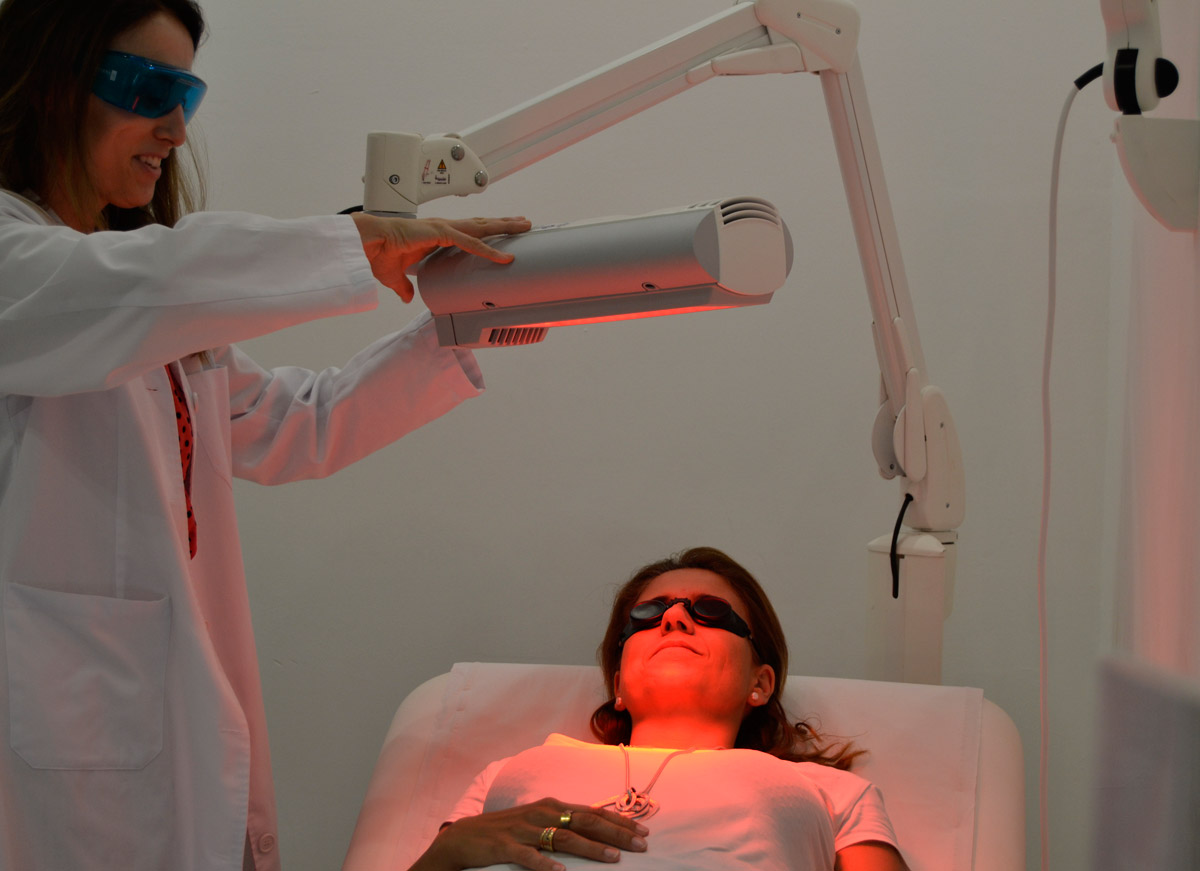Photodynamic therapy is a therapeutic procedure which combines the application of a cream (a photosensitising agent) with the posterior exposition to light from a special lamp for a specific period of time for the treatment of various skin diseases.
Photodynamic therapy is a therapeutic procedure used in Medicine, principally in dermatology, for the treatment of various skin diseases, above all precancerous lesions (actinic keratosis), skin cancer (basal cell carcinoma and squamous cell carcinoma or squamocellular carcinoma in situ, Bowen’s disease), and it has also proved to be useful in some inflammatory diseases of the skin, as well as in photorejuvenation.

Actinic Keratosis (AK) appears as a scaly or scabby eruption which shows up on the surface of the skin. The base may be clear or dark, the colouring may be burnt pink, red or a combination of these colours. This skin lesion generally develops slowly.
Actinic Keratosis usually appears on the face, the scalp, the back of the hands and arms etc., that is, on the areas of the body thqt are most exposed to sunlight. Hours of exposure to the sun accumulating over the years is the main cause of its development.
Actinic Keratosis may be the first step in the development of skin cancer. It is, therefore, a precursor to the cancer or a precancer, hence the importance of early diagnosis and treatment.
If they are treated early, almost all cases of actinic keratosis can be eliminated before they turn into skin cancer. But if they are not treated, it is estimated that approximately between 5 and 10% of these lesions may progress to the point of becoming a squamous cell carcinoma.
Basal Cell Carcinoma (BCC) is the most frequent malign cutaneous tumour, it makes up more than 60% of skin cancers and it is more frequent in older patients.
Although it is a malign tumour, rarely does it reach the point of metastasis, but it can be destructive in localised areas, so early diagnosis is a fundamental element in its successful treatment.
This method consists in applying on the area to be treated a specific cream (Methyl-aminolevulinate), which will be absorbed only by the cancerous cells. After a period of 2-3 hours, the dressings are taken off and the affected area is exposed to a lamp of red light. In this way, the generation of free radicals is stimulated only in the affected area, causing the destruction of the cancerous cells.
Its greatest advantages are its specificity, its selectivity (since it does not harm the healthy tissue), its safety and its scarce side effects.
Its application may also improve the results of other techniques such as surgery, since, when it is applied, it marks off the affected area better and thus facilitates the operation.
Also, it can be a guide as a method of detection of the lesions through fluorescence, determining the area of the lesion and what its extent may be.
In the Dermatology Unit of HC Marbella, we have the latest technology for the treatment of these lesions, and we place a non-invasive technique such as Photodynamic Therapy at your disposition.
Sources: AEDV / Cancer. Gov /HC Marbella
Juli 24, 2019
lesen Sie Nachrichten
Tel.: +34 952 908 628
+34 609 148 799
952908898 Onkologie
951829978 Bildgebende Diagnostik
951829947 Gynäkologie
952908897 Fertilitäts-Zentrum
951829947 Physiotherapie